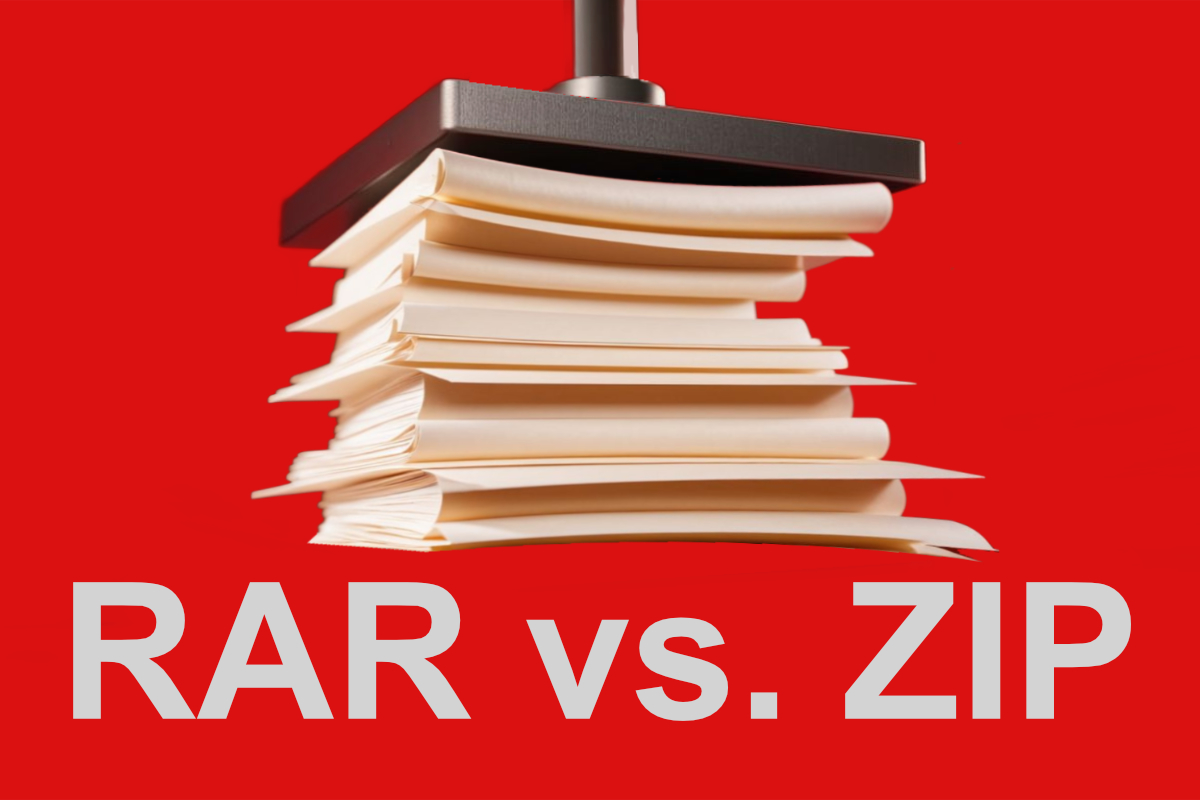
If you have ever downloaded and transferred files, you have probably come across the most popular and frequently used file formats for archiving compressed data – RAR and ZIP files. Both are compression algorithms that effectively compress your files to reduce their size without affecting their content.
In this article, we will outline the difference between ZIP and RAR files and whether one is better than the other.
Top 5 Differences between RAR and ZIP
-
Availability
ZIP has been around much longer than RAR. Therefore, it is not surprising that the ZIP archive format is supported by many operating systems: Windows, Mac OS X, Dos, Linux, to name a few. This is the main feature of the format – it can be unpacked, by default, on all operating systems.
ZIP is also recognized or improved by many other programs, such as 7-Zip (free program) and WinZip (shareware). When you need an archive format that is available everywhere, ZIP is an obvious choice.
-
Licensing
RAR file format is a proprietary format. A third-party software program, WinRAR is required to open and extract RAR archive content.
On the other hand, ZIP is a format that supports a variety of commercial tools, open-source tools, and libraries. You can use ZIP to compress and decompress files, and there is no need to worry about Licensing.
-
Compression Speed
Another difference between ZIP and RAR formats is the speed of compressing files in the archive. Although both RAR and ZIP use the super-fast compression algorithm to compress and decompress content, they slightly differ in terms of speed and efficiency.
ZIP compression is based on Deflate lossless compression algorithm. It is fast to achieve ZIP compression and decompression, whether you use software such as WinZip or the native ZIP support for Windows.
RAR compression with WinRAR, on the other hand, is way faster. The RAR format can compress a file much better than the ZIP format. RAR archives also have smaller sizes compared to ZIP archives, making RAR a slightly better alternative.
Of course, your mileage will vary depending on the archiving application you use, the hardware where you run the archiver, and the type of files you need to compress.
-
Compression Ratio
While it is hard to beat the accessibility of ZIP, the compression ratio of RAR is far better. Using WinRAR offers the best efficiency ratio of compression size to compression time: An incredible level of compression overall.
Despite the need for additional software, RAR can compress files much better than ZIP, but keep in mind that the more compressed the archive, the longer it will take to compress.
-
Security
Another difference between RAR and ZIP is the ability to password protect the archive. RAR files require WinRAR to compress file contents, which also has password encryption settings. The default support for Windows and Macintosh does not have a password protection feature. Instead, third-party programs (like 7-Zip or WinZip) are required.
How secure password protection is in a ZIP or RAR file depends in part on the program used to protect it. WinRAR and 7-Zip, for example, use AES-256 encryption to keep your data safe. A lot of security also comes down to password quality. ZIP or RAR with AES-256 encryption and a unique password will surely be safely archived.
Conclusion
RAR certainly has an advantage over ZIP in the terms of compression rate, lower data loss rate, better encryption, and speed. It also has error recovery capabilities and supports file spanning. Although a proprietary format, RAR is a popular choice.
In terms of availability and usability, ZIP wins over RAR. ZIP has been around for a long time, making it even more popular than RAR. The fact is, most archives on the Web are ZIP archives. If you have to send an archive to somebody, but you are unsure which file compressor app the person has, it might be wise to use the ZIP format.
To convert any file you have stored online and compress it, use the ZIP converter tool from Compress2Go.com. There is no need to download the file to the desktop first.